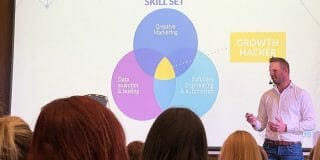John Wanamaker, considered a pioneer in marketing back in the 1800s, once said, “Half the money I spend on advertising is wasted; the trouble is I don’t know which half.”
A lot has changed since then, and data modeling and digital channels make attribution much easier. But marketing is still a cost to every business, and it doesn’t always deliver the results you hoped for.
There’s an alternative way to grow a business that, ideally, doesn’t rely on costly ads or sales teams.
Product-Led Growth is all about building a product that “sells itself”, and that sounds like a feat to many companies. In this article, we’re taking a look at the ones that are doing it right.
Table of contents
- What is Product-Led Growth?
- What makes PLG unique?
- The benefits of Product-Led Growth
- How the Product-Led Growth playbook is changing this year
- 3 Product-Led-Growth examples from B2B companies
- How to build a Product-Led Growth strategy
- Defining your PLG strategy
- Feature experimentation and Product-Led Growth
- PLG metrics and measuring success
- Conclusion: Combining marketing-led growth, sales-led growth, and PLG
What is Product-Led Growth?
Product-Led Growth (PLG) is a strategy that focuses on creating a product with great features, little friction, clear value, stickiness, and virality that drives customer acquisition and retention.
Successful PLG businesses are said to have a product so good it “sells itself.”
That’s because customers of PLG businesses often self-serve, signing up and referring the product to others without traditional marketing or sales assistance.
What makes PLG unique?
Here are some key features that make product-led-growth stand apart from other methodologies:
- Business growth is not limited by the number of leads your sales team can handle. With PLG, businesses scale with little additional cost or resources.
- Product-led growth works by providing value before charging the customer. Take businesses that follow old models when offering product demos: once a session ends, the opportunity to try it out ends, too. With PLG, companies give the user enough access (features or length of trial) to get value from the product, often before they provide their credit card details.
- All teams focus on the product, instead of working independently. Marketing and sales teams in traditional businesses often have little say in changing or improving the product, and their main goal is just to sell and market it.
In companies that follow older methodologies, marketing teams often get limited product input and are expected to work miracles while promoting it.
They’re often also tasked with removing friction within the sign-up flow and product experience, and creating upsells or cross-sells, where various marketing tactics can be used: messaging, loyalty programs, email, content marketing, or customer community building.
And because marketing costs money, that’s where the C-suite traditionally concentrates their worries, rather than making the product a top priority.
In PLG, however, every team is responsible for creating a fantastic product.
Marketing and sales are tasked with convincing users to try the product, ensuring they get ongoing value and refer the product to new friends or colleagues.
The benefits of Product-Led Growth
Bain found businesses using a PLG model see faster revenue growth, market share gains, and higher valuations.
Companies using PLG also experience shorter sales cycles and receive more user feedback, helping them build superior products.
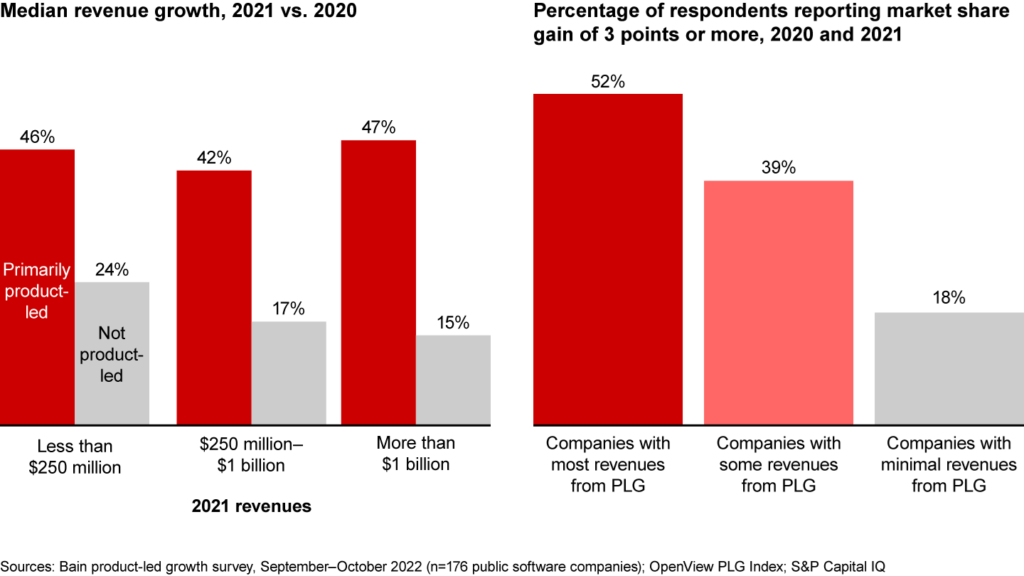
Moreover, companies that follow a product-led strategy aren’t as held hostage by increasingly expensive paid media as a route to growth or limited by hiring a larger sales team. Using PLG means you are more likely to produce a better product, because that’s where all teams are focused.
Ognjen Boskovic, the former Demand Lead at CXL and HockeyStack, explains,
Product-led companies are winning because they obsess over delivering value to the end-user and delivering it fast. When your growth is directly dependent on how well you treat your customers, good things are bound to happen.
Their core growth loop just spins faster and faster over time, bringing exposure and acquiring users for close-to-zero dollars.
Ognjen Boskovic
How the Product-Led Growth playbook is changing this year
Given the state of the economy and ever-increasing competitiveness, businesses can’t afford to play at PLG. In response to this, the PLG playbook is going through a deep refresh.
Gating value does not work anymore
As Andrew Capland, PLG advisor, shares:
Product-led growth is evolving. The playbook I see most SaaS companies adopting is already outdated. The future of how people will buy software is all about leading with product value – not gating it.
Andrew Capland
As more businesses use PLG and incentivize users to start trials, everything gets more competitive.
Going forward, companies that can show value without trials and a lengthy onboarding will capture a larger slice of the market than those offering a gated trial.
Customers might be comparison shopping or just browsing, but either way, it’s better to let them experience the product and have the ‘Aha’ moment straight away than make them jump through hoops.
This change in the PLG playbook is especially true for products requiring data or integrations to experience the value or where it takes longer than the average trial to test the product.
An example of this shift is Colossyan, which allows users to try out their AI avatar product with the hero section on their homepage.

Ditch the HOPE strategy
Too many businesses say they “do” PLG, but their strategy rests on hope rather than data, A/B testing, and experimentation.
Companies can’t just build a product and hope users find it, buy it, and continue actively using it. That requires measurement and optimization beyond the customer logging in and setting up a profile.
Don’t rely on hope. Instead, use data to make decisions and improve your offering.
Develop personalized experiences with “choose your own adventure” flows
We already know user journeys are rarely linear, so why do businesses still try to force users down set flows or journeys?
The next phase of product-led growth emerging is the “choose your own adventure” era.
Instead of forcing every user down the same flow, new SaaS products give people multiple ways to explore, and then customize the experience to those preferences.
Some examples of this are ungated product experiences, where brands are embedding a lite version of their product in their site without filling out any signup form, or pre-built templates, where they help new users get ramped up without having to start from scratch instead of a lengthy, 15-step onboarding process to understand how they might use the tool.
Andrew Capland
3 Product-Led-Growth examples from B2B companies
There are a ton of PLG examples in the B2B space, and you’ll recognize many of them as they have shot to fame, grown immensely, and then raised big rounds.
That includes names like Miro, Loom, Otter, Twilio, Expensify, InVision, Zapier, Hootsuite, and Buffer. But here are a few examples of PLG motions that I particularly like:
Self-serve university: ClickUp
ClickUp created a “university” for customers to educate themselves on the product via live training or self-paced on-demand courses.
Customers can also get their expertise verified and gain access to exclusive opportunities and a community of ClickUp power users.

Speeding up time to value: Airtable
Airtable offers tons of prefilled templates to get new users up and running quickly.
However, rather than creating these templates themselves, they encourage their users to share their creations. You can even find Airtable’s real product roadmap in the Airtable Universe.
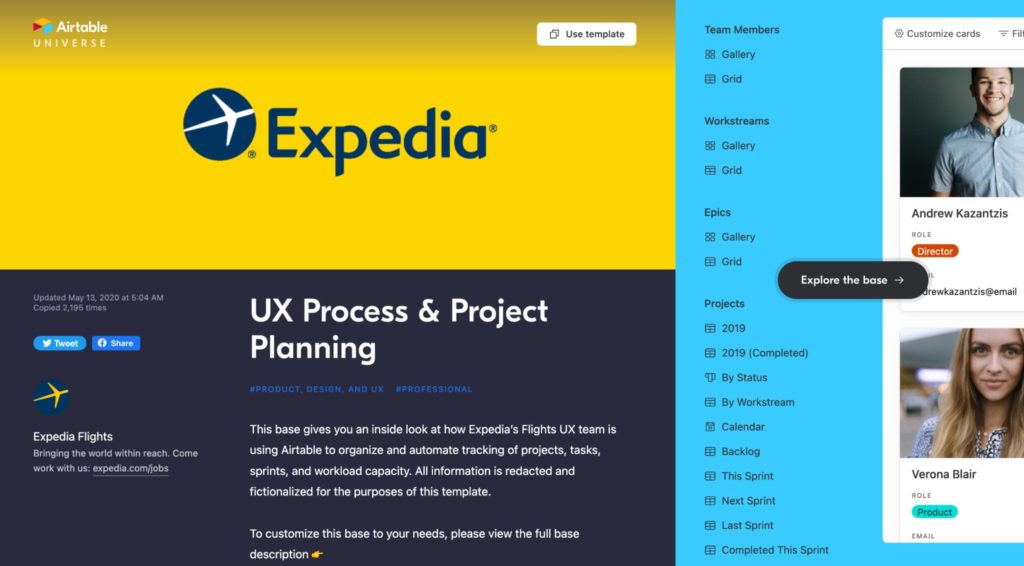
Built-in referral motion: Calendly
We have all experienced the annoying back-and-forth emails trying to work out when a meeting can be booked.
The beauty of Calendly is that it solves a user problem and is introduced to new users right when they usually experience this frustration.
For existing users to use Calendly, they send a link to (often) non-users. Thus, the growth loop continues as non-users experience the value without even seeking out a solution.
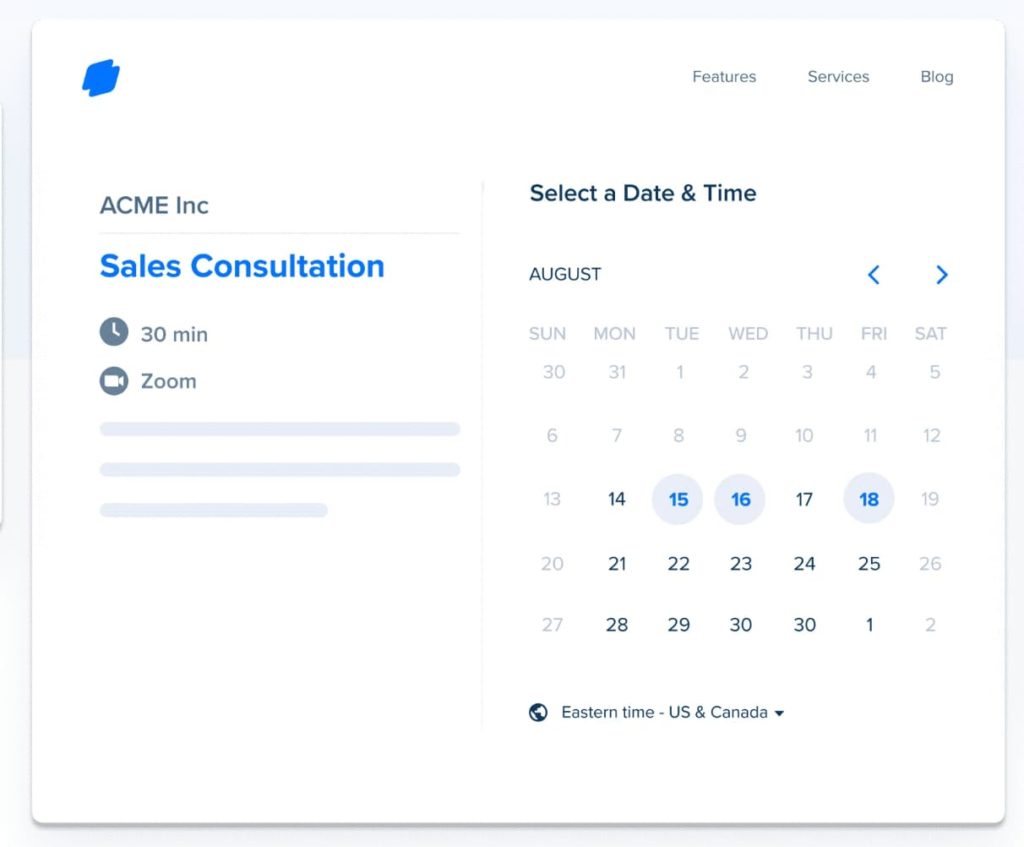
How to build a Product-Led Growth strategy
A good PLG strategy should always cover the following:
- Goals & targets – what do you want to achieve by when?
- Strategy – How will you achieve your goals and targets?
- Measurement – How will you know if you’ve achieved your goals or targets?
Your strategy will then inform more detailed plans that set out what you need to build/create/develop, the specific tactics you will focus on, and who’s responsible for what, and when.
Now, to create a PLG strategy, consider the central tenets below, but remember they are not the only options, and are neither a prescriptive nor exhaustive list (but still, a good starting point.)
Aim to reduce Time to value (TTV)
Time to value (TTV) refers to the time it takes new users on your site to become acknowledged with your product, reach their ‘Aha’ moment, and start using your service.
How will you get customers to experience the value of your product as quickly as possible?
For example, your strategy might involve;
- Ungated product experiences that don’t require signup or trials
- Freemium models
- Free trials
There are endless possibilities for how exactly you offer each of the above. For example, within the freemium model, you might base it on limiting the features available, usage quotas, storage or processing limits, or even access to support.
You need to be clear on your business model to establish these elements. For example, what’s your value, and how do you charge for it? Is it a standard flat fee? A subscription? Tiered pricing? What about upsells and cross-sells?
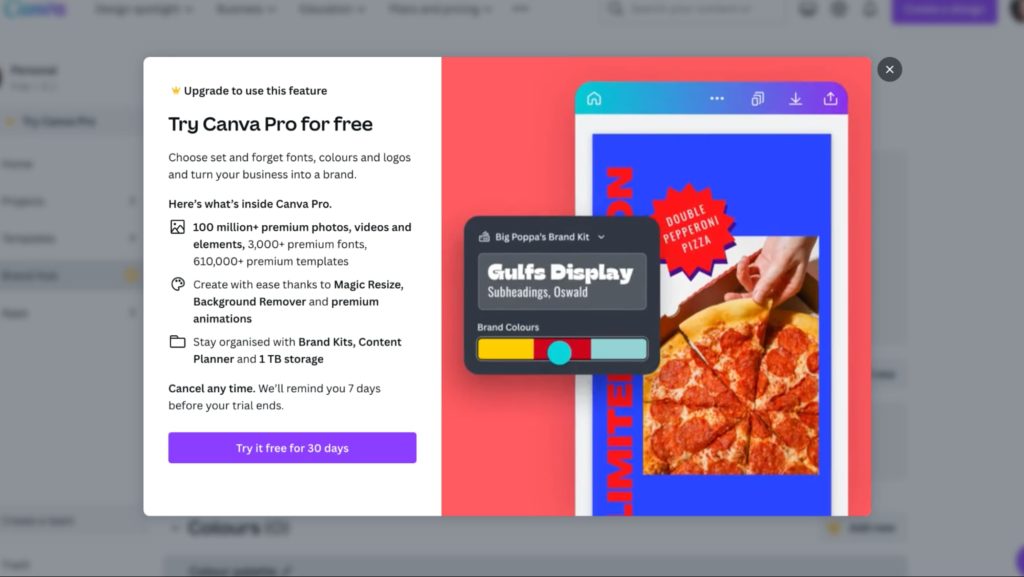
Canva offers a freemium model, where certain features are for paid users only – but these features can also be experienced with a free trial.
Also, consider tactics such as personalizing empty states, providing dummy data, or offering ready-made templates that help potential customers experience the full product, without setting everything up themselves.

Switch to a self-service approach
By ensuring your product has as few roadblocks and as little friction as possible, the chances a user will sign up, try it, and convert without interacting with your sales or CS team increases.
Now, which customers do you expect to self-serve? Are there customers who still require a sales-led approach? User research and delving into customer success chat logs will help determine where your customers need assistance.
You might consider some of the following methods to help your users convert without the help of sales or CS;
- On-demand training videos
- Interactive walkthroughs and tooltips
- Step-by-step onboarding
- Resource centers (for example, Auth0 made it their practice to create documentation, tutorials, and a software development kit for every feature they shipped)
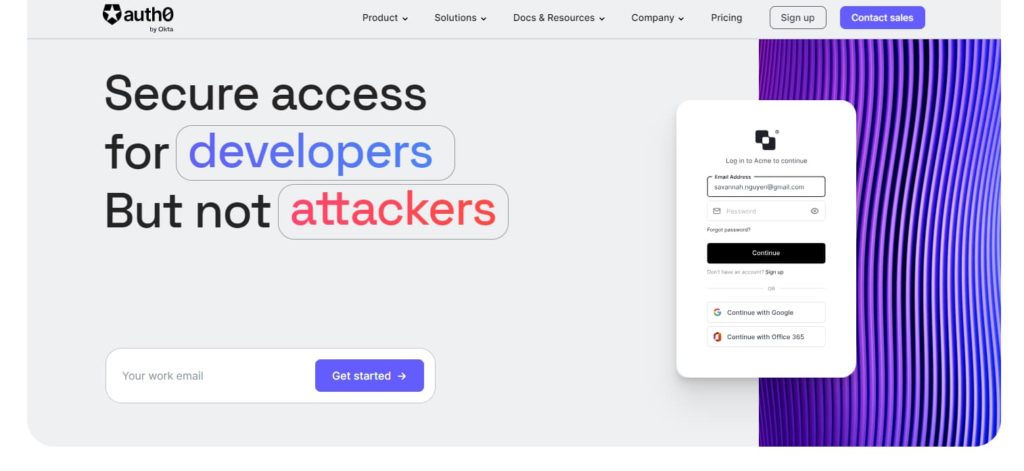
Reduce friction and remove roadblocks in your experience
Where is the friction in your user experience? Don’t just think about the conversion and activation stage but throughout the user’s lifecycle.
This is also where your strategy might help define your competitive advantage — how can your business model offer the most value with the least friction?
Creative solutions to this question can help set your business apart from the competition in a crowded market.
For example, consider how Warby Parker flipped the online glasses buying process on its head by understanding that the biggest friction point for customers was being unable to try on the product. Instead, they decided to mail out glasses for customers to try at home before buying.

Foster engagement and interactions with your product
How will you get people to use your product regularly and not churn?
You might consider creating habit-forming experiences where a trigger leads the user to act, hoping for a reward (see Nir Eyal’s Hook Model).
For example, Grammarly has a trigger in the form of a notification telling me how many spelling mistakes are in my work.

This little red notification prompts me to open the tool, and my desire to clear these notifications means I take action to accept or dismiss its suggested changes.
Once I clear all notifications, I get positive reinforcement telling me that clearly, ‘I’ve been practicing,’ and then the reward. At the end of the week, I also receive an email telling me how my writing compares with other Grammarly users.
There are also variable rewards in the form of badges for different levels of achievement. This, in turn, prompts me to invest further in the product. I update my ‘target writing style’ so that my performance is more accurately measured (in the hope I score higher next week).
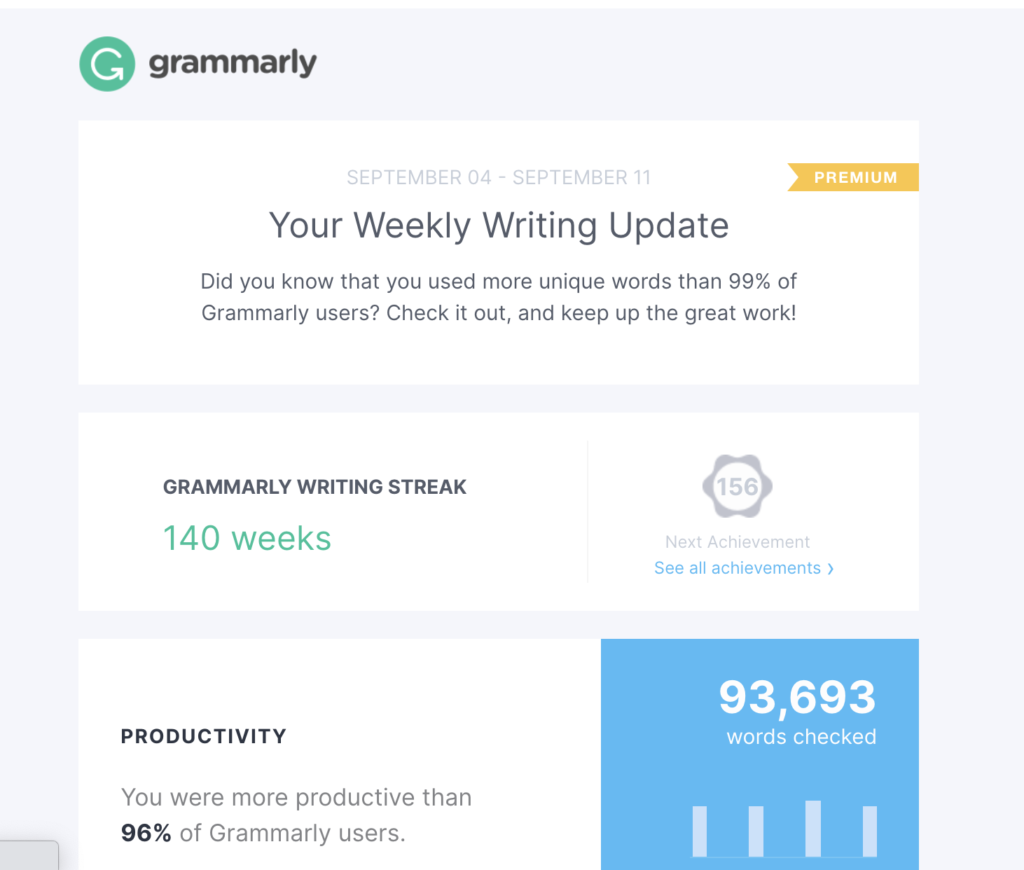
Outside of the habit-forming strategies, there are other ways to increase engagement, from loyalty programs and VIP user offerings where evangelists get access to new features or rewards before anyone else.
You can also engage your customers to help suggest and develop your product roadmap via hackathons or events.
Build growth loops
There are three main ways PLG businesses organically achieve growth;
- The nature of the product requires it to be shared, and thus, new users are introduced to the product and experience its value. Think Slack, Zoom, WeTransfer, and PayPal.
- Features so good they go viral. For example, remember the first time you used a digital-first bank like Revolut? That meant realizing you could open an account via an app-only experience, and instantly see your transactions in real-time. Many people had to show off to their friends and, in turn, introduce them to this new banking product.
- Referrals are incentivized. Share the product, and you get something. It could be greater access, gifts, rewards, discounts, elevated status, or even a personal thank you from the CEO; the list is endless. But to work, it has to be something that truly motivates your customers.
Defining your PLG strategy
Rather than picking the options you like the sound of from the above, you should go through the following steps.
First, establish answers to the following questions and use the answers to help inform your ideas;
- What’s your current growth model?
- What are your goals and targets?
- What are your customers’ wants and needs?
- What’s the nature of your business, product, and sector? Are there PLG strategies that aren’t an option, e.g., any considerations for highly regulated markets?
- What’s your position within the market?
- Where are you in your growth journey?
- What PLG strategies have you already established? What’s working and not working?
- How much budget is allocated to different teams or initiatives?
- What’s the level of buy-in for PLG among senior business leaders?
- What internal resources and expertise do you have available?
Once you’ve factored in the above, you can set out your strategy, but rather than implementing it and going home, it’s time for testing and refinement.
After all, some of the strategies you decide to follow might not work out as planned. With others, there are endless permutations of how you implement it, so you should run experiments to uncover which is ideal.
Feature experimentation and Product-Led Growth
If you’re wondering how to run experiments on your product, feature experimentation is the answer. According to Kameleeon’s recent PLG research, companies that invest in feature experimentation are 2.7x more likely to grow significantly than those that don’t.
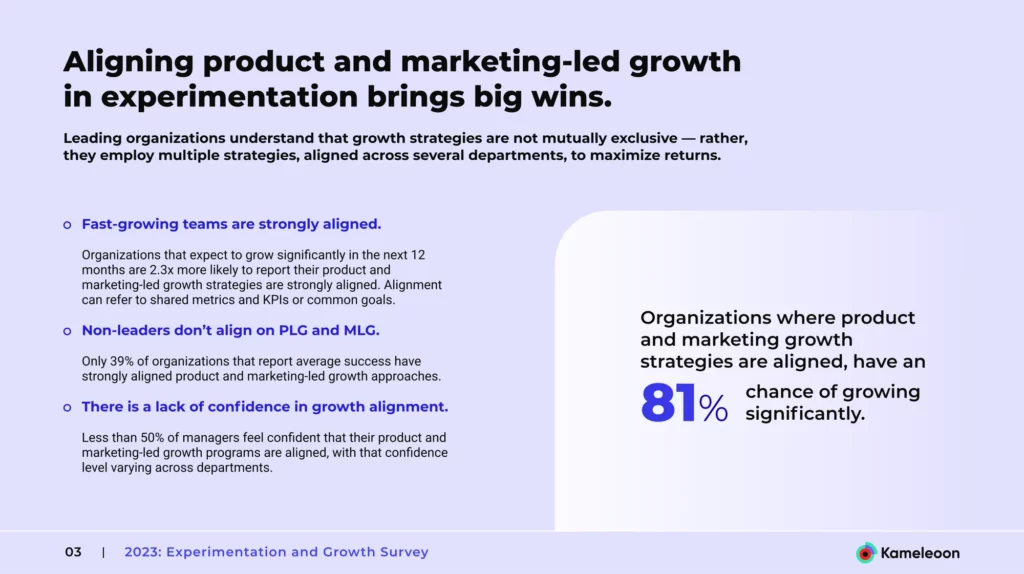
That’s because feature experimentation opens up a whole host of ways to experiment and use data to inform product decisions.
From progressive delivery, where small groups of users can test new features before releasing them to everyone, to limiting risk by experimenting with changes and measuring the impact before fully deploying new ideas.
Without feature flags, PLG is slow and cumbersome to implement, often putting significant pressure and additional work on teams. Your ability to use a data-informed approach to product development and growth will also be negatively affected without them.
PLG metrics and measuring success
The specific metrics you use will depend on the strategy and tactics you employ; however, there are some general metrics that can help measure the overall health and success of your PLG motion.
- Time to Value. How long does it take for users to try out your product and experience its value? How many visitors have reached this point?
- Funnel stage conversion rate. Measure your conversion rate between stages from users who land on your website to ‘product-qualified leads’ – the number of people who have engaged with a free trial or freemium through to paying customers and beyond.
- Customers. How many people are paying? Who are they, and how long did it take them to reach this point?
- Engagement. How many product features are used by paying users, and how regularly? How long do customers spend on your product, and how often do they visit it?
- Revenue. You might use monthly recurring revenue (MRR) or annually recurring revenue (ARR) for subscription-based pricing models or average order value (AOV) for others. It’s also worth measuring how much revenue comes from cross-sells and upsells.
- Retention. How long until customers churn on average? It can be helpful to use a customer lifetime value metric here too.
- Referrals. How many new leads and customers come from referrals? How well do they convert?
Conclusion: Combining marketing-led growth, sales-led growth, and PLG
While I’ve focused on PLG strategy, it would be amiss for me not to mention Kameleoon’s latest research.
The statistics are clear: Companies that combine growth strategies, e.g., MLG and SLG with PLG, perform better than companies that only use one. And 90% of industry-leading companies use strongly aligned PLG and MLG strategies.
Still, business is never black and white. Rarely does a one-size-fits-all approach work. There will likely always be a segment of your user base that requires sales assistance to convert.
If that segment is valuable enough, there’s every reason to combine PLG and SLG strategies. Likewise, growth through PLG alone feels limiting when marketing opportunities that tap into new markets and segments are available.
The caveat when combining growth approaches is not to do everything. Instead, prioritize strategies and tactics across the three growth motions that offer the most significant growth potential.
Create shared metrics and goals to help align teams and encourage cross-team collaboration. Then experiment. Organizations investing in experimentation are 350% more likely to grow significantly.
Letting data guide your decisions and determine what works for your product and business is the biggest route to growth there is.

